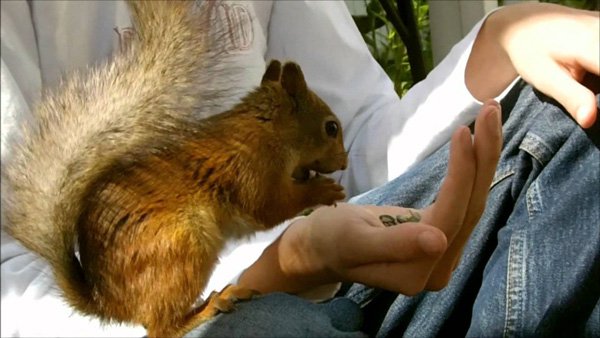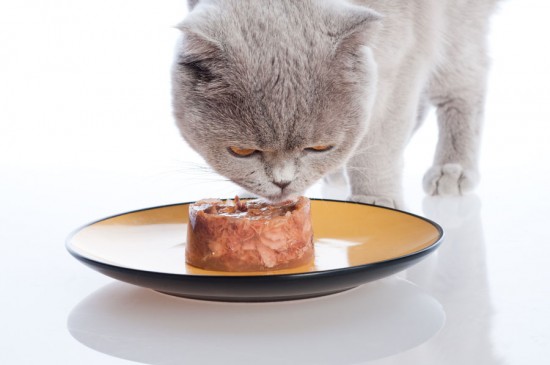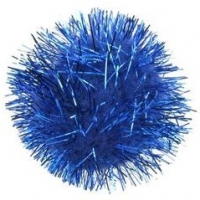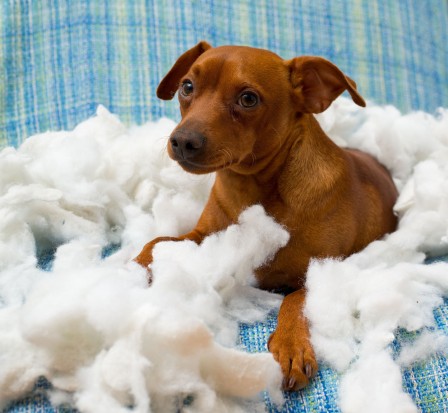Cat declawing in medical term is called onychectomy. This surgical procedure is very painful and complicated. This operation is performed on cats under anesthesia to remove the last bone of their fingers. It is the same as a man's fingers at the first knuckle. Cat declawing is an irreversible procedure and must be performed by a qualified veterinary doctor.
Many cat owners opt to have their cat declawed because of behavioral problems. This is perhaps the most inhuman form of punishment. When a cat is declawed, he or she suffers more than a loss of his or her fingers, the cat also suffers form a loss of balance, and cannot use their claws to defend themselves in a fight, or even to climb a tree to get away from danger.
Studies have shown that a cat who is declawed will spray more often than one who is not. this is because a cat uses it claws to mark its territory. When the claws are gone, they will turn to whatever means that they can to make their mark. This is usually done with urine. The same studies have indicated that cats that are declawed will be less likely to use their litter box because of the pain that is caused by scratching the litter.
Many cat owners opt to have their cat declawed because of behavioral problems. They look at cat declawing as a positive solution to the cats' misbehaviors. These people do not anticipate any harm to their cats or any change to the personalities of their cats. To them cat declawing is affordable and safe procedure. Cats continue to scratch even without their claws and no harm seem to have been done to their pets emotionally or physically.
Since scratching is a natural instinct in cats, you will notice that your cat will continue to scratch even after being declawed. Many experts advise that instead of declawing your cat, purchase a scratching post and see if it does the trick. You should use declawing as the final draw. It can have such devastating effects that is should only be considered as the last choice.
You can help your cat from damaging your furniture and possessions if you could provide alternative scratching surfaces for your pet to scratch. Get a big piece of log for the cat to scratch and sharpen its claws. Buy a few scratching posts and place them in front of the areas where the cat likes to scratch. Take your feline to the posts and show it where the scratching should be carried out. Trimming your cats nails can deter him or her from tearing apart your furniture, however this needs to be done often.
These days there is available a very welcoming alternative to cat declawing which is safe and without pain. This is the glued on vinyl nail caps developed by a veterinarian. These caps are glued on to your cat's nails so they become blunt and harmless and will not cause any destruction to any surfaces. Other options such as repulsive smell or soap, booby traps or motion-activated alarms have been used to deter your cat.
Declawing your cat is a form of torture. It may even cause your cat to distrust you and the vet who does the procedure. It is inhumane, and if you can find a different method of training your cat, you should use it. You would not chop your child's finger off if he or she took a cookie, you should not declaw your cat for the same reason. Your cat is part of your family, and you should look upon him or her as another child. He or she depends on you for everything, and it is up to you to protect them as much as you would your own children.

 Smallest Working Terrier: Norfolk Terrier
Smallest Working Terrier: Norfolk Terrier
 The Difference Between A Bearded Collie And A Polish Lowland Sheepdog
The Difference Between A Bearded Collie And A Polish Lowland Sheepdog
 Feeding A Fussy Feline: Owner’s Manual
Feeding A Fussy Feline: Owner’s Manual
 Ringworm In Dogs
Ringworm In Dogs
 My Cat Skiibowski Loves To Play Fetch With His Sparkle Blue Ball, I Swear He Is Part Dog
My Cat Skiibowski Loves To Play Fetch With His Sparkle Blue Ball, I Swear He Is Part Dog
 What Causes Cholesterol Deposits In The Eye Of The Dog?
What Causes Cholesterol Deposits In The Eye Of The Dog?
 How To Stop Your Dog From Destroying Your Furniture When You Are Out
How To Stop Your
How To Stop Your Dog From Destroying Your Furniture When You Are Out
How To Stop Your
 Six Good Reasons For Feeding The Right Diet For Your Dog’s Age
Six Good Reasons
Six Good Reasons For Feeding The Right Diet For Your Dog’s Age
Six Good Reasons
 Dachshund Or “sausage Dog” Health And Wellness Considerations
Dachshund Or “sau
Dachshund Or “sausage Dog” Health And Wellness Considerations
Dachshund Or “sau
 The Pros And Cons Of Taking On Two Unrelated Adult Dogs At Once
The Pros And Cons
The Pros And Cons Of Taking On Two Unrelated Adult Dogs At Once
The Pros And Cons
 Importance of Giving Your Dog the Best Food and Caring
Importance of Giving Your Dog the Best Food and Caring
Importance of Giving Your Dog the Best Food and Caring
Importance of Giving Your Dog the Best Food and Caring